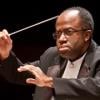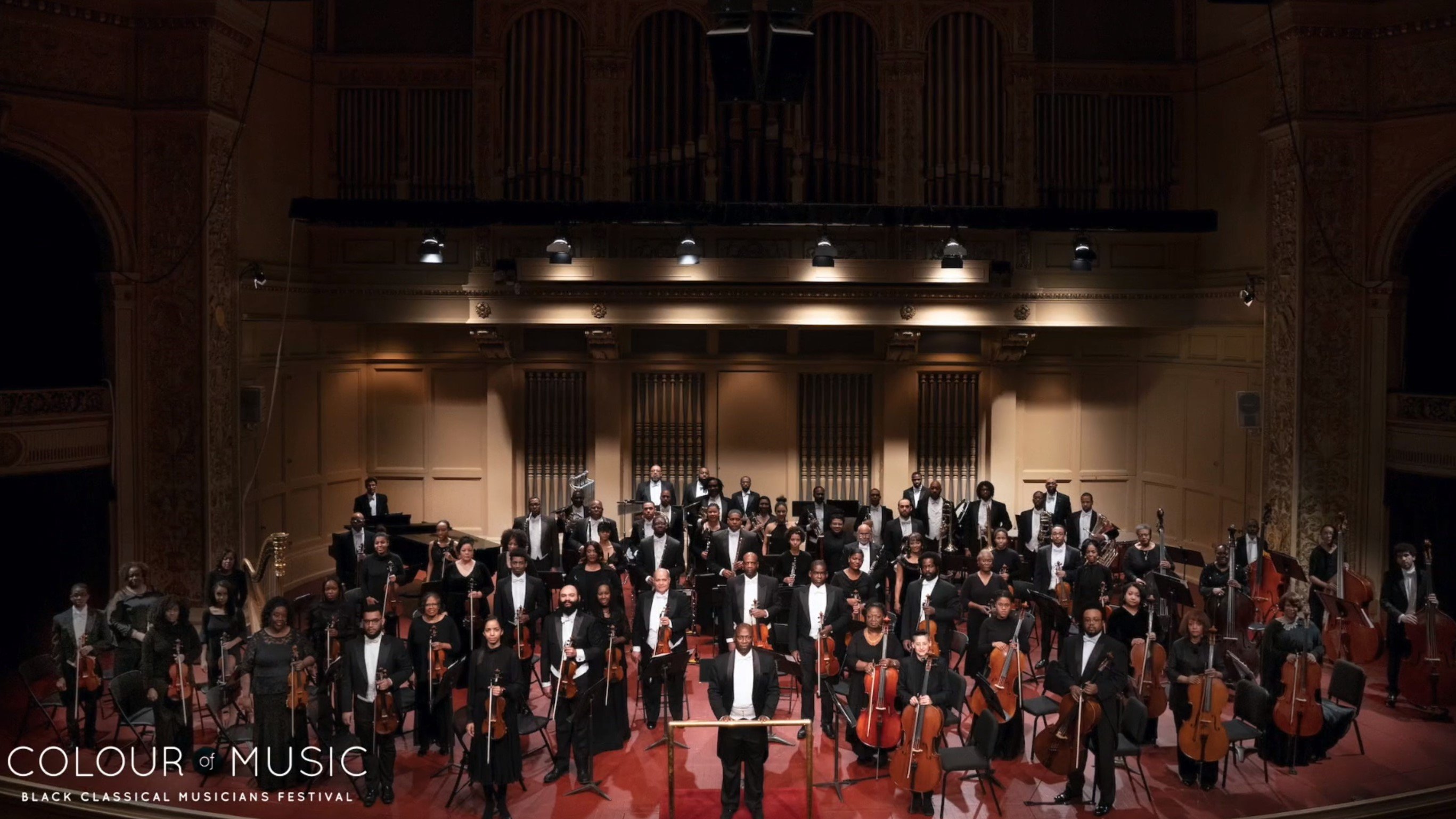
I am not the right person to recount the struggles of Black musicians to play in the country’s great orchestras. So I am reminded. “How could you be?” comes the scold, from both Black people and white: “in your whiteness, are you not another example of the systemic racist? Sure, you’re no feckless yokel, long-time-listener-first-time-caller, pulling your Southern Cross down country roads in an F-150, yelling out MAGA dittos during the ‘Rush’ hour … ”
But how different is the “good journalist” with blue bumper stickers, kind eyes, and sanctimony? Isn’t he or she more dangerous in a way, more insidious, deaf to their own bias under the stern brow of fairness, but all the while blithely coopting and profiting from the personal stories of Black artists for his own ends, his own pursuit of self-respect — but rarely in recognition of what’s required for institutional change in the classical music world, which is drastic action, relentless reform (adopting a spirit and a policy of genuine engagement, for example, not “outreach,” which is merely a grant writer’s measure of community involvement), and most important, recognizing racism, finally, not as some ethnic flu but as another virus that no matter what you do will never quite go away.
Such is the notion of systemic bias in journalism. And true enough, although I would argue that the stories, and the history — the history, as soprano Laquita Mitchell kept repeating to me a few weeks ago — are more important than the storyteller. Everybody does what they can. I am neither sociologist, pundit, nor diversity trainer — commentary is best left to the likes of Robin DiAngelo, author of White Fragility, which has become required reading in many quarters of the classical music world lately. I am merely the afternoon courier bringing old news to those who don’t know the travesties or have forgotten. This may also be news for some younger Black musicians looking for solace in the common experience of so many. But really the news here is for a white audience, some of whom, even after all this time, still feel a little uneasy listening to Black musicians play Beethoven and Wagner. Or any number of Black composers, for that matter. An audience that despite its progressive conceits and the best of intentions often — not always, but often — doesn’t see itself as part of a system, much less a racist system.
2
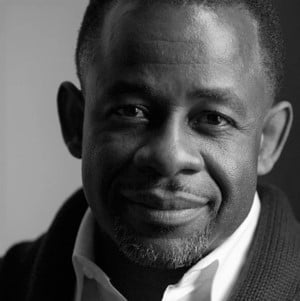
And what is this racist system? It’s what Lee Pringle, founder and artistic director of the Colour of Music Festival in Charleston, South Carolina, which features an all-Black orchestra — it’s what he calls “the last water fountain.” It’s that nearly impenetrable network of mostly white donors, directors, presenters, producers, administrators, board members, academics, flacks, critics, union representatives, other musicians, and teachers — and their teachers and their teachers before them — each with classically-trained sensibilities and prejudices, back and back, down through the hallways of expectation and promise, and always optimism, a network tied to the privilege of possibility, beginning with the grooming rituals and those mostly white and Asian middle-class parents who follow the cultural habits of their parents and so consign their children to music training at an early age. In the system, support is assumed, and when the question arises, the answer is predetermined: “Oh honey, $1,800 seems like an awful lot of money for an oboe, but I guess, if you really want this, we can always find the money somewhere.”
And so begins the march; the route is fixed. White people and some ethnic groups follow a progression of youth orchestras and schools of the arts and then are often paired with principal musicians in local professional orchestras. Meanwhile, young Black musicians inevitably draw attention to their raw talent but can’t afford the coaching and mentoring to help develop technical expertise and to help direct the way through the audition maze. Having little or no experience in a youth orchestra, they arrive in college music departments with, as one musician put it, “a lot of heart and personality but may not catch every note.”
The effect of this closed system is that it’s pervasive, ingrained, and needlessly exclusive, a monoculture that white audiences often don’t know much about or, frankly, seem to care much about. What’s ignored is that in this country's 1,200 orchestras, less than about 2 percent of the members are Black. Why? And why doesn’t that percentage seem to change?
And why is it that only a few really talented Black conductors get opportunities, and only on Martin Luther King Jr. Day, or during Black History Month, or maybe on the Fourth of July, but then they don’t progress to subscription concerts? And how many Black managers and board members work at the 10–15 top American orchestras? And how has this arrangement remained so unchallenged? And what happens to all the Black musicians, conductors, and composers who, despite their talent, and sometimes because of it, never get picked up by the networks of high-profile, nonprofit classical organizations? What happens to them?
3
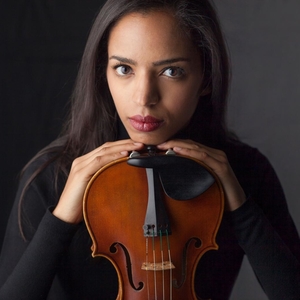 Anyango Yarbo-Davenport
Anyango Yarbo-Davenport
is a 36-year-old violinist who grew up in Munich, the daughter of an international concert singer from Shaker Heights, Ohio and a noted Austrian violinist and conductor. Yarbo-Davenport’s father died when she was 10, leaving a legacy of aspiration and respect for discipline and expertise. And now here is Anyango, whose name means “sun goddess” (a combination of “born in mid-morning” and “goddess”) in Swahili, who was sent to the Mozarteum University Salzburg and now these years later is an international soloist attracting increasing recognition. She’s been principal violinist with the Colour of Music Festival orchestra for several years and in 2017 made her debut as the soloist and conductor of the Colour of Music Festival Virtuosi, a chamber orchestra of women of African descent. Under her direction, the Virtuosi are presented on the concert rosters of institutions such as Carnegie Mellon University and the Duke Ellington School of the Arts in Washington, the University of Richmond, HBCU Allen University, and W.O. Smith Music School in Nashville. She is also assistant professor of violin and coordinator of violin and chamber music at the Pontifical Javeriana University, in Bogotá, Colombia.
Lee Pringle calls Yarbo-Davenport’s talent the “elephant in the room” that nobody wants to talk about: “She’s won several competitions but the darlings of the world that these big orchestras go after are not biracial black women like Anyango, they’re white males, Asian women, and a ton of European whites who get all the invites to play concertos. The truth is, she can play them all against the wall.”
Davenport knows adversity, including those auditions when racism is often in play but not all the judges in the decision-making room are on board with it and so things get leaked out. “Like the time I get into the finals of a [full-time orchestra] position and then the screen is removed and it’s like, “Oh, no, no, we don’t want candidate number two.” Suddenly, they don’t want candidate number two, even though candidate number two won and that was me.”
“It’s excruciatingly frustrating because naturally you always do your best and then 50 percent more, and you know you played well. You know you are deserving of it because you have developed over decades the ability to judge yourself correctly and the other applicants too. I will be the first to congratulate somebody else if they did a better job, but it’s excruciating when the screen gets removed and [one of the judges] is maybe some Francophile that is a foreigner themselves and he doesn’t understand how a Black girl can play with a bigger and better sound than a big white guy.”
In addition to her music career, Davenport has become an activist in a growing movement of Black musicians led by, among others, Lee Pringle. She tells this anecdote about a friend from music school, a violinist from North Carolina: “A jolly giant, and a wonderful musician, such delicate, careful, tasteful playing. Really among the best but he could never get hired because he’s overweight and doesn’t fit in with the tiny little Japanese and Korean girls in the white orchestra section of first violins — even though he could play just as well, if not better. It’s just tragic because he put himself through school serving as a night watchman and got more work doing that than he did ever as a violinist. He was the most beautiful player but economically disenfranchised by the system. Finally, he couldn’t afford the medical care he should have had and died last year of a heart attack. He was in his 30s.
“I know three Black musicians, all colleagues, who contracted the coronavirus and died. I know two white faculty members at white universities who are not one tad better than my other Black colleagues at their craft, but they survive because they have top-of-the-line health insurance. This systemic inequality costs lives, and this is just the tip of the iceberg. And all while the idea is, ‘Oh, you can’t blame this person or that person. That’s just how the system works. It’s too big.’ In the end, everyone is guilty and guiltless at the same time.”
4
Ask Black musicians about stories of racism and they may mention Christopher Caggiano, for 16-years an associate professor of music theater at Boston Conservatory at Berklee. Critics portray the incidents as classic examples of systemic racism in academe and point to Caggiano’s habitual insults and public humiliation of Black students, which included “doing a mocking ‘jig-dance’ next to the screen while a blackface video played.” Caggiano resigned in early June 2020.
Shortly afterward, Cathy Young, the conservatory’s executive director, wrote a letter in a Facebook post, with an elaborate apology and a detailed agenda. At the top of the list, “Boston Conservatory will mandate diversity, anti-racism, and anti-bias training for all students, faculty, and staff to promote awareness, understanding, and empathy within our community.” At the end of the list, Young added, “Still, with systemic racism so deeply embedded in our institutions, even the most earnest, honest, and well-intentioned efforts to tackle it head on can reveal our blind spots. I recognize the profound shortcomings of the Conservatory, and I am committed to addressing these shortcomings and making change happen.”
Another story you may hear about is Koko Onwuzuruigbo’s audition before Metropolitan Opera Music Director Yannick Nézet-Séguin The story was told in an interview of pianist Nina Kennedy on her Noshing With Nina interview show on cable TV. Nézet-Séguin asked the American lyric coloratura soprano to sing none of the classical pieces other competitors were asked to sing, but rather Bess, from Porgy and Bess. What’s disheartening is less the clueless request than the frequency with which Black performers are still typecast and tokenized.
5
It’s part of a culture of estrangement — when the symphony director explains rejection by saying, “the problem is we don’t know how to market you.” When you’re associated, as a Black person, with a certain type of music and therefore that must be all you can sing. When you’re the only Black person in a famous choir and everybody gets makeup but you. When, at an embassy cocktail party, in front of a prominent Black musician, an Austrian diplomat tells a joke with the N-word. When a security guard blocks the backstage entrance, asking the Black musician, “Can I help you?” When you “never, ever, ever” see people behind the scenes who are Black. When the donor says, “you people have jazz and rock ’n’ roll. Why can’t you leave the classical to us?”
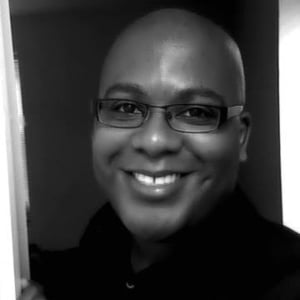
When you decide to alter your name to improve the chances of getting an audition. Robert L. Davis is principal clarinet of the Cleveland Opera Theater and The Cleveland Opera Orchestra. From time to time he’s taken steps to hide his race. “My middle name is Lemar; I’ve taken that off of my resume. I just put Robert L. Davis instead. That sounds more neutral. I’ve also changed other things that relate to color. I played a concert for the National Association of Negro Musicians and took that off as well.”
Sometimes, the racism is unbelievably blatant. This is the dark heart of the system. Brandon Keith Brown is a Black conductor in Berlin, a Peabody Conservatory career grant winner, and some would say an agent provocateur in the world of classical music. On a Saturday night not long ago, he went to the Chicago Lyric Opera to hear Renée Fleming. As he reported in a piece for LEVEL, a Medium publication, “As I first took my seat, a plump, heavily jeweled White woman scrunched up her body as if I had coronavirus. ‘Go sit somewhere else!’ she said. That’s not a paraphrase; that’s exactly what she said. I ignored her and looked straight ahead. She must be joking, I thought. But then, she said it again: ‘Can’t you just go sit somewhere else?’ When I told her not to say another word, she piped down, but the damage was done.” Brown left at intermission. “The concert hall,” he wrote, “is a magical place, able to deliver spiritual sustenance through music. Yet, rather than doing that for everyone, classical concerts continue to exist as a sonic refuge of Whiteness.”
6
Lee Pringle tells this story about a trumpet player. “He lives in New York City and went to either the Manhattan School of Music or Juilliard. I remember him telling me how many auditions he’d gone through and how he just could not believe that at this point in his career he had not landed a position as one of the trumpets, not principal trumpet, but just one of the trumpets in an orchestra. I could see the frustration in his body language. It all comes down to the seven people on the panel who quantify the person playing. Naturally, the panels reflect these biases. And then, by the time you get through the blind audition and you are now a candidate, then you have to get over the hurdle of all the artistic people in the orchestra signing off on you.”
Which brings to mind Matthew Chen, a cellist who came out of Juilliard and had been expected to join the San Diego Symphony. He attracted attention after Instagram posts he wrote were republished on the account orchestraisracist. In one post, Chen writes, ‘he only got the Kovner [Fellowship, from The Juilliard School] because he’s fucking black” … followed by another post, “Juilliard only awards black people, so it looks good for the institution / In reality, these niggas are mediocre players.”
Asked to confirm basic details in the story, including when the comments were made, and when the San Diego Symphony found out about them, as well as the results of an investigation within the organization, and whether the incident might be used to advance a policy against racism, a publicity person for the San Diego Symphony responded that Chen was no longer “joining” the Symphony and there would be no further comment. Chen offered an apology on Instagram, but the whole matter, both the offense and the reaction, suggests how the system deals with unflattering revelations, in contrast to Cathy Young’s forthright response to more serious charges.
7
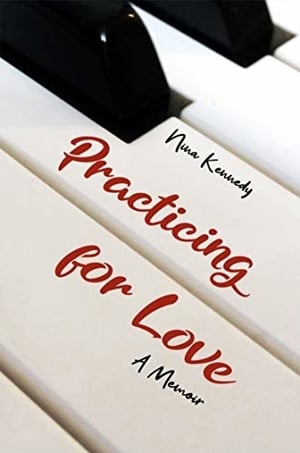 Nina Kennedy’s 2019 memoir Practicing for Love (released in paperback earlier this year) is the story of a very talented concert pianist making her career. Her memories of racism and sexism include moments at some of the country’s great conservatories, including the Curtis Institute of Music, where at one point Kennedy was the only Black female piano student. This was in 1977–1978. Among her teachers was Eleanor Sokoloff, an iconic figure who taught at the Institute from 1936 to 2020 and was famous for her obsession with scales, arpeggios, and Pischna exercises. Kennedy says that Sokoloff kept her at technical exercises instead of allowing her to explore repertoire that later came up on her exam.
Nina Kennedy’s 2019 memoir Practicing for Love (released in paperback earlier this year) is the story of a very talented concert pianist making her career. Her memories of racism and sexism include moments at some of the country’s great conservatories, including the Curtis Institute of Music, where at one point Kennedy was the only Black female piano student. This was in 1977–1978. Among her teachers was Eleanor Sokoloff, an iconic figure who taught at the Institute from 1936 to 2020 and was famous for her obsession with scales, arpeggios, and Pischna exercises. Kennedy says that Sokoloff kept her at technical exercises instead of allowing her to explore repertoire that later came up on her exam.
Kennedy wrote recently in an email, “Looking back I realized that this [focus] was designed to keep me from being able to audition for scholarships, competitions, or other teachers. I’m amazed at my ability to keep up my work on repertoire in spite of the fact that she wouldn’t listen to it. And, when I did play the Chopin F Minor Ballade for her at the end of the year, she said, “I could kick you in the stomach!’” … Because Sokoloff apparently had no idea of Kennedy’s talent and when she realized, it was too late.
“Sokoloff saw to it that I was kicked out of Curtis. It was such a disappointment, and I had no recourse. Marian Anderson even called the then-president John de Lancie to find out what was going on, but the Sokoloffs were even more in charge than he was, since they were connected to the Curtis-Bok family. It was a horrible experience. But I kept my eyes on the prize and kept building my repertoire for the concert career that I imagined for myself. It’s interesting to be writing about her now because I heard that she just died within the past few weeks. She was over 100! Some of my white female colleagues went on Facebook about how wonderful she was and how sad they were at her passing. I just kept my mouth shut. If she was nice to them, great! I certainly never saw that side of her.”
8
Soprano Laquita Mitchell made her debut as Bess in the San Francisco Opera production of Porgy and Bess in 2009. Earlier this year, 2020, she sang in Paul Moravec’s Sanctuary Road, an oratorio based on the writings of William Still (1821–1902, a direct ancestor of composer William Grant Still) about the Underground Railroad. She offered these anecdotes capturing the nuances of systemic racism.

“I remember the first time singing at the Washington National Opera, and sitting down with Ruth Bader Ginsburg and with the Joint Chiefs of Staff, and my ex-husband, who was a military person, saying, ‘Oh, my God. I can’t believe it, that’s, like, my ultimate boss sitting across from me.’ Black people in general and black musicians in particular are rarely in the room when these kind of events are happening, I don’t think that our business has done all that they can to bring and welcome other people into the room. That’s what it’s about. It’s about being brought into the room.
“I sang with the New York Philharmonic a few years ago; we were celebrating African Americans who have paved the way for us. Dr. George Shirley was there. Betty Allen was there, the great mezzo-soprano who has since passed on. I knew her because she taught at Manhattan School of Music. Marian Anderson was there, along with a few people being honored. I said to the artistic administrator, ‘It’s really a shame that Adele Addison isn’t here and that she isn’t being honored.’ The administrator said, ‘Who’s Adele Addison?’ I said, ‘Well, Adele Addison is the recording voice for so many of Leonard Bernstein’s recordings, she’s also famous for her baroque performances. She must be in her mid-90s now.’ … ‘Well, we don’t know who she is,’ said the administrator and I kept thinking, how do we truly change systemic racism within classical music if we don’t know history?”
Part 2: Against All Odds
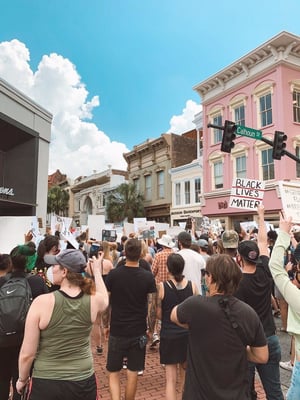
If one vaccine for systemic racism in orchestras is remembering and honoring Black classical music history, another might be to establish a counter system, built around “systemic equity,” if you will, a true social movement to demonstrate and encourage — and insure — the talent of Black musicians and the strength of Black classical repertoire. One place where such a movement is being assembled, however unlikely the setting, is Charleston, South Carolina, the state once known as Ellis Island for African Americans.
For all its charm, Charleston is not in good spirits these days. Feels “dissonant,” a local poet told me. The city has been whipped by virus outbreaks, hurricanes, rising sea levels, and one night of rioting in which some high-end stores on Upper King Street were burned. Add the recent robbery-murder of a prominent white citizen out in the street, and add the five-year-old hate-murder of nine prominent Black citizens inside the Mother Emanuel African Methodist Episcopal Church. A memory as fresh as just yesterday.
From a Black perspective, life in “Chucktown” has changed in recent years but only superficially and not always for the better. On the one hand, a 12-foot-tall bronze statue of “enslaverist” John C. Calhoun was removed from Marion Square in June 2020. And the Charleston Wine and Food Festival no longer hosts events at nearby plantations, which to critics always suggested something akin to brunch at Auschwitz. On the other hand, there’s growing awareness that the true cost of tourism includes Black flight, with culture, businesses, and all. The city, once 65 percent Black, is now 73.7 percent white.
Meanwhile, the Charleston Symphony Orchestra plays on, with 23 core players and a single Black musician, an assistant conductor named Kellen Gray. For Juneteenth, Gray programmed a special concert with the title “Call and Response: A Concert for Equality,” broadcast from an empty hall. It included works by Adolphus Hailstork, William Grant Still, Samuel Coleridge-Taylor, and George Walker. It was a first, according to oboist Kari Kistler, who noted in an email, “Traditionally, we have not served every single facet of our community. In fact, as with many orchestras, we have usually just served a small slice of its older, richer, whiter patrons. This is becoming untenable, for a variety of reasons, but especially lack of equality.” The Symphony, like some other classical organizations has promised to address these inequities.
Derek Reeves is principal violist of the Fort Wayne Philharmonic and once was associate concertmaster of the Charleston Symphony Orchestra. He also plays occasionally in the annual Colour of Music Festival. “I did not enjoy my time working in Charleston,” he said recently. “I found the city to be extremely racist, relative to what I had experienced growing up in the Midwest. When I say ‘racist,’ I’m talking about how the history of slavery and the social stratification that arises from that path is still manifest. It’s still very segregated. I observed Caucasians carrying themselves with a definite sense of superiority and entitlement, whereas the Blacks had an air of being downtrodden.”
2
The Colour of Music Festival (COMF) is one of Charleston’s most promising cultural initiatives. It was founded by Lee Pringle in 2013 and features an all-Black orchestra with some 80 musicians on call. The festival is usually one week long and now has offshoots in cities like Columbia, Pittsburgh, New Orleans, Nashville, and Houston, as well as Charleston. Sacramento may be added to the list. COMF was inspired by Spoleto Festival USA, which took off in 1976, the dream of the late Gian Carlo Menotti, an Italian-born composer with an American passport. He’d been searching for a small, European-looking city in America to replicate an Italian festival and found Charleston.
Spoleto Festival USA, of course, has become world-renowned, while the COMF is still struggling for funding and playing a limited number of performances each year.
COMF is one of three major organizations in America that promote “Black classical excellence.” Another is the Gateways Music Festival, a biannual reunion event at the Eastman School of Music in Rochester, New York. The music director is Michael Morgan, music director of the Oakland Symphony. The third group is the Sphinx Organization, a social-justice organization focused on bringing more Black and Latinx people into the performing arts. Sphinx was founded by violinist Aaron Dworkin. What distinguishes COMF from the other two is that it presents only classically-trained Black artists, no Latinx artists unless they claim African descent.
The COMF has become a favorite venue for many Black musicians and singers seeking refuge from orchestras where they are often the sole Black players and where the programming is inevitably limited to dead white men. “With the help of people like Lee Pringle,” says Dr. Jacqueline Pickett, principal bass with the Columbus Symphony Orchestra, “we’ve found audiences who are excited about this music and this music can be Puccini, this music can be Chevalier de Saint-Georges, this music can be Mary Watkins, that music can be part of honoring musicians like Ida Haendel (1923–2020). We are finding an expression and we are creating a system to express that intention.”
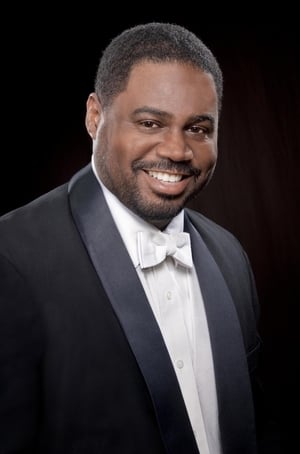
Tenor Rodrick Dixon has performed in the festival and was initially drawn by Pringle’s notion of “amplifying the African-American diaspora.” “Lee finds these extraordinary musicians from all over the country, brings them together to apply their craft, be artistic, show beauty, and give musicians a real opportunity.” Dixon has been particularly struck by the bonds that people form during these festivals. “It’s amazing watching orchestra members come to these events, greet each other, everyone invested in the repertoire, the experience. I began to see this light, this energy, this sense that we’re doing something and not just in one place. And here we’re having conversations that you don’t normally have.”
“I’ll fly in to one of the concerts,” says Laquita Mitchell, “and at the hotel I’ll turn around and there are all these amazing people and someone says, ‘Oh my God, I love playing with you; I was in New World Symphony.’ I'm like, ‘Oh my gosh, I remember.’” Mitchell added, “If I go into a white space and I happen to see a black person that’s playing, more than likely I know him or her. That’s how few of us are let in the room.”
His disenchantment with Charleston aside, Derek Reeves describes the sensation of playing in an all-Black orchestra like COMF in terms of “code-switching.” “People of color,” says Reeves, “usually Black people, will adjust their vernacular, their dialect, in order to assimilate into whatever social group they happen to be in. We’re constantly making these adjustments because typically we speak to Black people differently than we speak to white people. That’s because there are very distinct cultural differences. It may not be a wide difference. It depends on the individual. I noticed that even the style of play while no less proficient technically, there’s a tangible visceral difference that I feel playing in an all-Black orchestra. Which is not good or bad necessarily, but it speaks to the richness of the human experience. You could make the same argument about the Shanghai Philharmonic.”
3
Lee Pringle, 56, grew up near Charleston and is a member of the Middleton Place “family,” a group of descendants of both slave owners and the enslaved at what was among the largest plantations along the East Coast. His musical background is as a choral singer, and in 1998 he formed what has become known as the Charleston Gospel Choir and the Charleston Spiritual Ensemble. He has also made a career as a producer and promoter. But first and foremost, Pringle sees himself as the leader of a movement best expressed by the festival itself. It’s a movement of both perception and reality, guided by Pringle and what might be thought of as a loose council of players, a dozen or so much-heralded musicians, conductors, and composers who perform at the COMF, serve as influencers, and interact with the press.
“My role,” says Pringle, “is going against all odds to continue focusing only on Black classical contributions, showcasing an all-Black orchestra and chamber ensembles to contrast with the all-white presentations shown globally. Our mission continues to evolve by partnering with organizations who believe classical music has to change its ‘face,’ hence Black artists having a platform to showcase their talents.”
Financing for COMF comes from “fee-for-service opportunities,” traditional fundraising, and sponsorships. But the going is always tough and the prevailing truth for Pringle is that “you can run an organization into the ground and white wealth will still come back and give you millions of dollars. With Black institutions, you have a flat tire and they run like roaches when the lights are turned on.”
He tells a story about fundraising in Houston. “I’m trying to raise money. I meet a Black developer, one of these muckety-muck, nouveau moneymaker types. She sits down and says to me, ‘Darling, I love what you’re doing but you’re going to have to change the name of that organization. No one’s going to give money to a “Black classical orchestra.”’ I listened to her and at the end, I said, ‘I really thank you for your advice and suggestions, but I will not be changing the name of my organization.’ It’s no different than Shen Yun or the Russian Philharmonic. Or the Israeli Philharmonic. Nobody asks them to change their names to make their political associations more palatable.”
Interestingly, and counterintuitively, the festival, whose audience is 60 percent white, receives little money from the Black bourgeoisie. Pringle says that’s because there’s no tradition of planned giving. There is a niche of Black money interested in supporting jazz music but not classical. Ninety-five percent of COMF donations come from white families or corporations. The single largest donor is a socially liberal conservative who was interested in supporting the festival — in some measure — because Pringle always makes his payrolls, that famously essential Republican requirement.
The problem now, says Pringle, is that, since the Black Lives Matter protests have quieted down, Kenosha and Portland notwithstanding, white donors, including the chief diversity officers in large corporations, officers who are themselves predominately black, have returned to their comfort zones, choosing not to ruffle their bosses and have tabled the “action,” the financial support, that seemed so necessary a few weeks ago and would make such a difference to organizations like the Colour of Music Festival. In the end, Pringle is convinced that the future of COMF is in the hands not of liberals, who are always analyzing and considering, comparing their donation with someone else’s, worrying about ‘the right amount,’ but in the checkbooks of liberal-minded conservatives who understand how to build a foundation of philanthropy. As it is, Pringle has always gotten more support from conservatives than liberals.
4
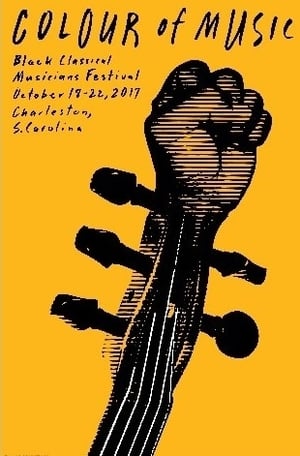
Pringle is a convivial and dapper revolutionary, but at the same time he has little patience with those who want “to stay at the table and [not] make the white people feel uncomfortable.” Pringle’s notion is that whites need to “get comfortable with being uncomfortable.” In 2017, Pringle published a festival poster designed (by Colin Quashie and Gil Shuler) around the themes of defiant solidarity and togetherness. The iconography focused on a five-stringed violin with the scroll transformed into a fist. The strings were white, to acknowledge the European origins of classical music, and five strings symbolized, to that point, five years of struggle to launch and sustain the festival. “When I released the poster, people thought it was so inflammatory because of the fist,” says Pringle, whose intent was to encourage defiance (and a link to Black Lives Matter) but also genuine brotherhood and common purpose.
“So often,” said Pringle, to clarify his view of the Black-white divide, “whites have Black friends until the Black friends have to remind them, ‘I’m Black and I live in this Black skin every day. There are going to be some opinions I have that you may feel uncomfortable about, but if you are my friend, then you have got to respect the fact that you wake up every day and you can literally do any damn thing you want and you are given a pass simply because you’re white, and I have to prove myself first.’ Then people say, ‘Okay, yes, you’re cool, brother.'”
Pringle’s opposition to systemic racism in the arts extends to the mainstream press, which he says has “continued to rely on a handful of ‘top level’ artists that they anoint. For example, if you’re Black and in the New York Philharmonic, and you graduated from the University of Michigan, or you’re Black and you’re singing at the Met or one of the top five opera houses, you get to say what being Black and classically-trained means. Neither The New York Times nor NPR, in particular, have shown any interest in what we’re doing, because they have ‘the faces’ and because they’re connected to the conservatories from which some of the leading Black artists have graduated.” Both outlets, adds Pringle, are followed by most white and Black supporters of the arts, who may not realize they’re getting a very narrow view of how Black classical artists envision classical music and their role in it.
Having said that, Pringle agrees with New York Times music critic Anthony Tommasini that blind auditions should be done away with to ensure diversity, the arguments of some Black musicians notwithstanding. And, says Pringle, “if an orchestra insists on keeping blind auditions, they should not receive any taxpayer funds from city, county, or federal entities.” But he acknowledges the question is moot, so long as orchestra establishments remain white, and because “there are just too many variables that continue to keep Black artists from even having the funds to fly or drive to auditions.” Some interested stakeholder has to demand inclusive policies from arts organizations in order for integration to happen. For its part, COMF relies on a musician’s CV, particularly experience playing classical masterworks, as well as the strength of a referral. Naturally, no musician is going to recommend someone of lesser talent than themselves: “So you’re not going to get any C+ players.”
But what rankles Pringle even more than ill-conceived press coverage and the false promise of blind auditions is the way white programming undermines Black culture. White orchestras, whether in committee or at the behest of the music director, inevitably program what’s familiar and what sells: “It’s just that simple. Many music directors don’t know Black composers or think the works by Black composers are not ‘as classical,’ and therefore they’re not interested in learning about them. Every conductor’s program [at music schools] should require a class on the topic of Black and female composers before they graduate. Black kids are taught that music by white composers is the standard, which just reinforces what a Black student understands classical music to be.”
5
Finally, there’s the matter of unions. “I will tell you this,” says Pringle, “many unions will not allow Black musicians to play with orchestras like mine. The musicians have to defy the union bylaws because the unions say, ‘You cannot play in a non-union orchestra.’ I understand it’s their bargaining leverage, but the reality is that many Black union members are not getting work; they think having a union card is helping them, but it isn’t.”
In 2018, Pringle called a union president in Houston, a Black percussionist, to ask if she would like to play in his festival. “We’re in her backyard, and she told me, ‘You’ll have to pay a bargaining fee for myself and my members.’ And I’m like, ‘Ma’am, we are not paying a bargaining fee. We do not do compliance from local unions. If your musicians don’t want to participate, that’s their right, but if they do, you’re not going to have me sending you a list of union members who play in my orchestra because we’re not a union orchestra.”
6
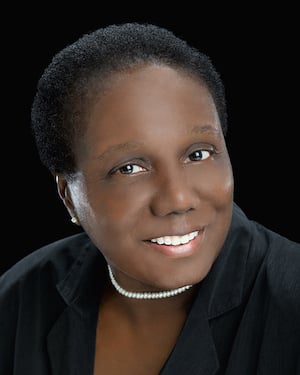
Among Lee Pringle’s circle of musicians and conductors, there’s no majority of pessimists or optimists, although the most outspoken tend to shake their heads at the future. For some, like Jacqueline Pickett, the sensation of shared endeavor suffices, along with a spiritual quality. “You never walk alone. That’s part of the spiritual content of my upbringing. ‘You never walk alone.’ There are other people who feel like you do and that’s the beautiful thing about The Colour of Music.”
One common perspective is that things are getting slightly better in terms of the diversity of soloists on stage, but there’s been no change backstage or upstairs. What would be a sign of real change? “As a concertizing, small concert room person,” Anyango Yarbo-Davenport told me, “I would say when I can put 50 percent black composers on the program, and nobody’s going to ask me, ‘Who’s this George Walker guy or who’s Coleridge-Taylor Perkinson? Sounds bluesy. Did he write anything classical?’”
Yarbo-Davenport told an anecdote about the reluctance of managers to make real systemic change: “I had a conversation with a member of a musical society that I don’t want to name so as not to get him into trouble. He asked me as his Black colleague to go over a statement that showed the society’s plans to further the integration of Black musicians. I revised the statement with him. It took us about an hour and a half, adding specifics including the percentage of Black members who would sit on the organization’s board. Guess how many of those suggestions got into the final proposal? Zero. They just wanted to make themselves appear non-racist. It was only the appearance of an effort. But non-racist is not anti-racist. The truth is, we don’t want to make the non-racist, the systemic racist, uncomfortable by guaranteeing that there will be a certain percentage of Black musicians on the board. The talk is all about solidarity, but the solidarity we don’t need. We need action against the system.”
And what would be a realistic percentage of Black participation in the nation’s great orchestras? Conductor Chelsea Tipton II threw out 15 to 20 percent. Some suggest as high as 30 percent.
“Sometimes,” says Derek Reeves, “I think the whole system needs to be completely destroyed and rebuilt from the ground up. Right now, symphony orchestras are fighting for their relevance because they’ve been insulated from the progress of society for so long. So many orchestras are seen as just being museum pieces that no longer have any relevance to the communities in which they exist. The orchestras that care about their own survival and recognize that they can no longer exist in a vacuum of whiteness will make changes or they won’t exist. They won’t continue to be supported if they don’t speak to a commonality of human experience.”
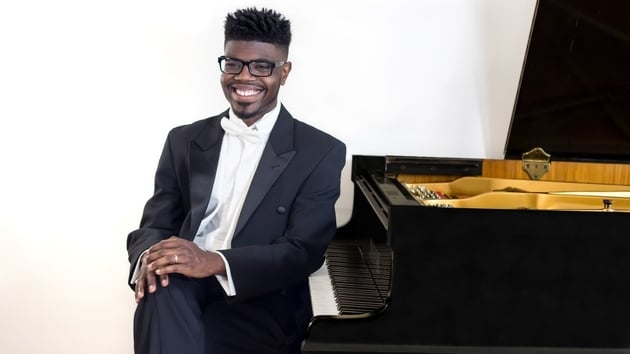
Concert pianist Kyle Walker is more hopeful. “I see a situation where people feel welcomed to a classical music concert. That goes for the audience mostly, but also for the musicians. Education will completely change. You’ll find that there are way more people of color, students, kids of color that are inspired to play musical instruments because they see that there are other people that look like them doing it. I also acknowledge that’s not a complete necessity. There’s a reason I became a good musician, and it’s not because I saw a Black musician doing it. That’s not the end all, but it is a big part to see experienced role models. That I see in the future.”
In the end, the question remains: can enough of the racist aspects of classical music be transformed to allow for the survival of the concert hall as we think of it, and the reclaiming of the so-called “people’s music”? Rodrick Dixon puts it this way: “You don’t have to go into a building and find racism. It’s already there. The question is, ‘Are you going to walk into the building and go looking for it?’ If you’re preoccupied with looking for it, then you’re not doing the work. If you do the work, then the work makes room for you. Ultimately, if you do the work, you’re serving humanity. If you’re serving humanity, then no one can really stop you, and then the racism can’t get in your way. But if it does get in the way, then that’s why you have the conversations we’re having, the national discourse today, which is to try and bring light and amplify change in people’s hearts from hatred.”
NB: As originally published, Robert L. Davis’s middle name was misspelled. It’s Lemar, not Lamar; we regret the error.
NB: As originally published Koko Onwuzuruigbo’s auditioner was incorrectly identified as Peter Gelb. It was actually Metropolitan Opera Music Director Yannick Nézet-Séguin; we regret the error.




